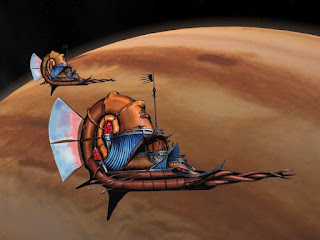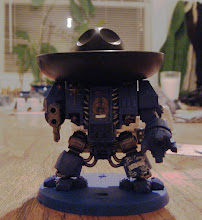Welcome back to the PIT Crew!
Today, we're going to talk about how to
get started with Gaslands. I know, you're wondering why I'm doing
this now, after doing several other articles. Well, since Gaslands:
Refueled is coming out soon, I thought now is actually the best time
for it. Also, I was really excited with Gaslands and wanted to right
to it.
Hopefully, you read my review of
Gaslands and got the basics from that. And then read my other PIT
Crew articles. Now, let's talk about how you get started with
building up a Gaslands team.
The first thing you're going to need is
the rule book. Of course, you probably want to wait until Refueled
comes out, but there's no reason why you can't throw some money at
them for a digital copy of the current version right now. Options are
always good. After you finish that, you'll want to download the Time
Extended expansions. And the errata. And probably the reference
sheets.
Now, it's time for the big questions:
What brands to look for and where to buy?
Brands -
Hot Wheels:
This one of the two major brands that
makes toy cars and you probably have some laying around from when you
were a kid. How Wheels does make a quality product (things I never
thought I'd have to talk about...) and they make a wide variety of
cars. Hot Wheels is great for finding some important vehicles, such
as monster trucks and war rigs. They're also the only one that I've
found (so far) that makes motorcycles and ATVs. They also have a wide
variety of normal, regular cars you'd see on the street, as well as
some more fantastical ones. They also have licenses for some
interesting Intellectual Properties, including Marvel and DC
characters. You could make an entire team with Justice League cars,
if you wanted.
Price: $1-2 for regular cars and like
sized vehicles, $4 for monster trucks and themed vehicles, and $6-8
for war rigs.
Matchbox:
This brand has a weird dichotomy. They
make some really weird stuff and some realistic stuff. We're talking
things like buses, vans, and the like. Really boring stuff. They also
have the license for Jurassic Park and Jurassic World, so you can use
those to make a team if you want. They're about the same price as Hot
Wheels and usually stocked by the same stores. I used the Jurassic
World golf carts for buggies and picked up a five pack of “city
vehicles” that had a pair of buses in it.
Price: $1-2 for cars and like sized
vehicles
Metal Machines:
This is fairly cheap brand I've seen
around that doesn't seem to have a lot of variety. However, that
price can be nice if you're just getting started. They also seem to
be somewhat easy to find, usually stocked with the other brands
above.
Price: $0.50-1 for cars and like sized
vehicles
Fresh Metal:
I've only found collections of this
brand but for very cheap. They're priced about the same as Hot Wheels
and Matchbox, but that might only be because I found them for cheap.
The collections they sell also have cheap buildings and mats. Two
collections (police and fire departments) come with helicopters, each
of which are different designs. I've found them easy to take apart
without damaging them, which is a good thing if you want to do that
sort of thing. Given the cheap price, even if you break some of them,
you're not out a whole lot.
Price: $5 for collections of five
vehicles, $7+ for collections that include cars and buildings
Where To Buy -
Target:
This is probably the most common places
people will go for toy cars. The stores are fairly common across the
country and carry several brands. The price point isn't always great,
usually charging full retail price. However, around holidays, they'll
drop to 30% to 50% off. Buying at that time won't make you look like
a total creep if you don't have kids of your own (that's a joke,
folks).
Ross:
This is the only place I've found Fresh
Metal cars with any regularity. I have found some Hot Wheel and
Matchbox stuff here, but it wasn't as cheap as Target when they were
on sale there. However, I would at least check here while you're out
and about. Just in case.
Dollar Tree/Dollar Store/Dollar
General:
This is probably the best place to go
if you want to pick up dirt cheap cars. They have a brand that comes
in 3-packs, which are great for testing the game and learning how to
modify them. They are, as you might imagine, made very cheaply and
might fall apart or break. You get what you pay for. You can also
find Hot Wheels and Matchbox cars here for $1, but the selection is
poor.
Ebay:
While I haven't used this myself, a
quick check reveals all sorts of cars from all sorts of companies at
all sorts prices. I'm sure you know that “buyer beware” applies
when using eBay.
Well, that's all I've got to say about
Gaslands for now. I'll be taking a break from this series until
Gaslands: Refueled is released and I've had an chance to look it
over. When I do, I'll be doing another Let's Review about the new
version, and then resume with this series. Let me know what you think
about what I've said here, and Gaslands in general, if you would.
























